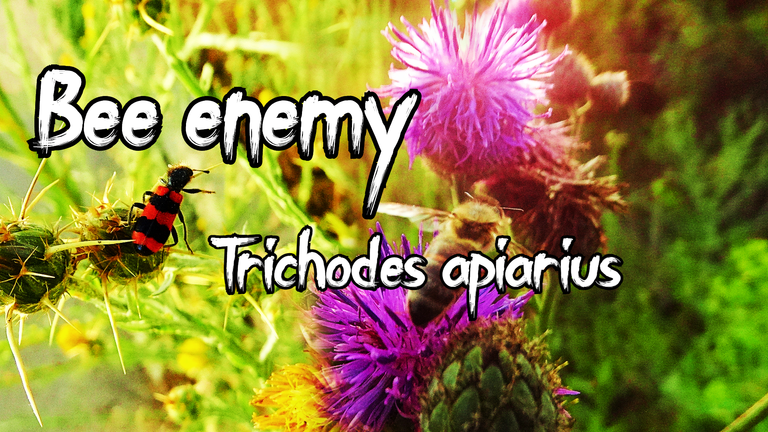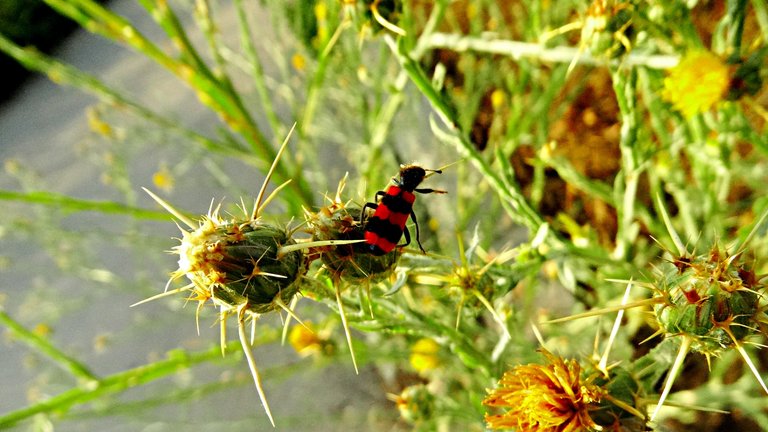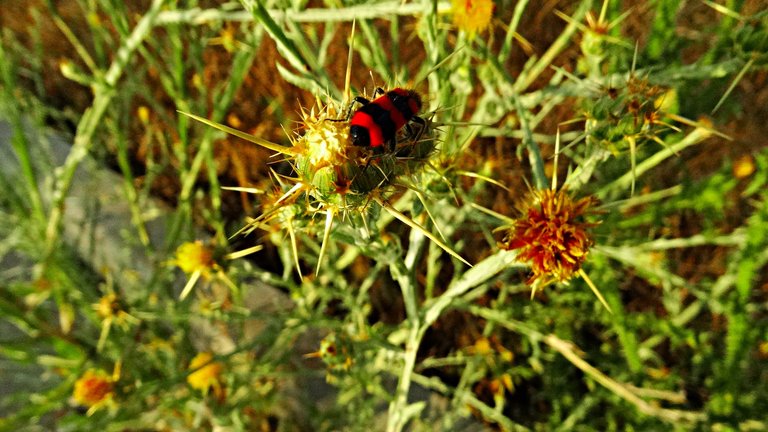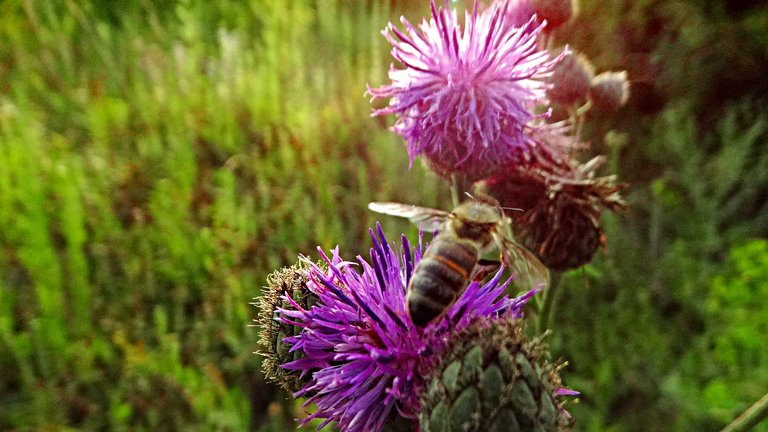Bee enemy Trichodes apiarius
Today I drew attention to one very interesting point concerning beekeeping and draw your attention to a beetle which is a very cunning and insidious enemy of bees, which may not have read Homer but clearly applies in practice the tactics of a Trojan horse which the enemies will bring into their camp themselves.
Probably, the ancient Greeks came up with this cunning move, seeing how a beetle called Trichodes apiarius does it.

This is what this cunning beetle looks like, it can often be seen on flowering plants, where bees are often found.

The Trojan horse of this beetle is that the beetle lays its eggs on the surface of the flower and larvae hatch from the eggs.
These larvae patiently wait for a bee to fly to the flower and these larvae stick to the bee's body and end up in the hive.
There, in the hive, these larvae penetrate the honeycombs with bee larvae and begin to feed on them, turning into adult Trichodes apiarius beetles.

And the bees themselves become the Trojan horse!

Below you can see my containers with data that I collect in INLEO and always have quick access to them it is very convenient.
Material thoughts about beekeeping №1
When I visited dense forests, I did not see ideal conditions for bees there, but many beekeepers harvest beekeeping products in such places.
Link to the container with my portfolio
Link to the container with my Tag memo for getting coins #1

More to come!
Enjoy viewing the photos and reading the article!
Have a blessed day!
| Location: | Ukraine |
| Author: | Author @barski. In my publications you will see only my author's works. |


@barski referral links:
inleo.io https://inleo.io/signup?referral=barski
holozing.com https://holozing.com?ref=barski
Oh, and lest I forget @bradleyarrow, the creator of the BBH coin would be happy to see our votes "for" the witness @thebbhproject, I cast my vote.




